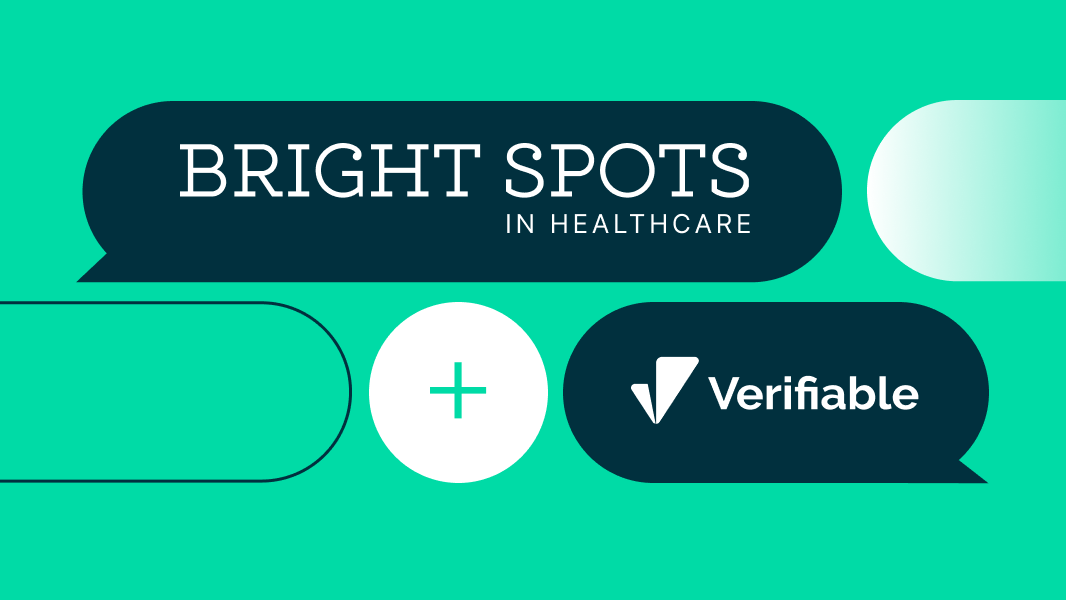Explore the transformative impact of automating re-credentialing processes in healthcare, offering precision and efficiency in maintaining provider standards.
Re-credentialing in healthcare involves regularly verifying the qualifications and practice standards of healthcare providers, a necessary step to ensure consistent patient care quality. It's a process filled with detailed checks of licensure, work history, and malpractice insurance, essential for maintaining trust and safety in healthcare settings. Simplifying this complex task, Verifiable offers a modern approach to handling these requirements efficiently. In this article, we explore how automating re-credentialing can save time, reduce errors, and keep healthcare organizations in line with evolving regulations, providing key insights for those navigating this essential aspect of healthcare management.
Understanding Re-Credentialing
Re-credentialing in healthcare is a systematic process to ensure that healthcare providers continue to meet the professional standards necessary for delivering patient care. This process is typically repeated every 2-3 years and is integral to maintaining high standards in healthcare services.
Components of Re-Credentialing
State Licensure Validation: Checks the current status of the provider's medical license, verifying its validity and good standing with medical boards.
DEA Certification Validation: Confirms the provider is properly licensed to prescribe medications.
Work History Review: Examines the provider's employment history to assess experience and professional development.
Malpractice History Analysis: Investigates any history of malpractice claims or sanctions against the provider, which is crucial for assessing risk and ensuring patient safety.
Board Certification Check: Ensures that the provider maintains any required board certifications, indicating their ongoing commitment to their specialty's standards.
Sanctions and Exclusions Check: Ensures that there are no sanctions with medicare, medicaid, or with the State they are licensed to practice.
Regular re-credentialing is not just a bureaucratic formality; it's an essential process to safeguard the quality of care and uphold the integrity of healthcare services. By routinely reassessing healthcare providers' credentials, healthcare organizations ensure that their staff is competent, qualified, and capable of providing safe and effective care to patients.
The Traditional Re-Credentialing Process
The traditional re-credentialing process in healthcare is a multi-step procedure that can be both complex and time-consuming. Understanding these steps and the challenges they pose is crucial for healthcare organizations.
Steps in the Re-Credentialing Process
- Application Submission: Healthcare providers submit a re-credentialing application, often accompanied by supporting documents detailing their ongoing qualifications and practice.
- Verification of Credentials: This involves primary source verification of key credentials such as state licensure, DEA registration, NPI numbers, and board certification.
- Review by Credentialing Committee: A committee within the healthcare organization reviews the verified credentials and decides on the provider’s continued participation in the network.
- Compliance with Accreditation and State Laws: Ensuring that the re-credentialing process adheres to standards set by accrediting bodies (like NCQA) and state healthcare laws.
Common Challenges With This Process
Time-Intensive Procedures: The process requires extensive data collection and verification, making it time-consuming.
Risk of Errors: Manual handling of the re-credentialing process increases the risk of errors, which can lead to serious compliance issues.
Regulatory Compliance: Keeping up with changing state laws and regulations for different healthcare providers, including physicians, dentists, and behavioral health specialists, adds complexity.
Impact on Healthcare Providers and Organizations
Failure to re-credential timely can lead to compliance issues with Medicare and Medicaid, affecting reimbursements.
The demanding nature of the process can also strain the administrative resources of healthcare organizations.
And the cumbersome and repetitive nature of traditional re-credentialing can be a source of frustration for healthcare providers, impacting their focus on patient care.
Benefits of Automation in Re-Credentialing
The integration of automation in the re-credentialing process reshapes how healthcare organizations manage provider qualifications, offering significant advantages over traditional methods.
Enhancing Efficiency and Reducing Costs
Automation streamlines the entire re-credentialing process, making it quicker and less labor-intensive. This efficiency not only cuts down on the time taken to re-credential providers but also translates into considerable cost savings for healthcare organizations. Reduced administrative burden allows staff to focus more on direct patient care and other critical functions.
Improving Accuracy and Patient Safety
Automated systems are adept at minimizing errors in data handling, ensuring greater accuracy in the re-credentialing process. This precision is vital for patient safety, as it ensures that healthcare providers are appropriately qualified and up-to-date with their credentials. Accurate re-credentialing helps maintain a high standard of care within healthcare facilities.
Ensuring Regulatory Compliance
Staying compliant with regulatory requirements, including CAQH, Medicare, and Medicaid, is streamlined with automation. Automated tools are programmed to adapt to regulatory changes, ensuring healthcare organizations remain compliant and avoid potential penalties.
Leveraging Data for Informed Decisions
Automation also offers the advantage of data analytics, providing healthcare organizations with insights into re-credentialing trends. This data can be instrumental in making informed decisions, identifying improvement areas, and refining credentialing strategies for better overall efficiency and effectiveness.
Verifiable's Role in Streamlining Re-Credentialing
In the complex landscape of re-credentialing, Verifiable is a helpful tool that modernizes and simplifies the process. Let’s explore how Verifiable's automation capabilities are transforming re-credentialing in healthcare.
Automating Re-Credentialing Tasks
Verifiable leverages technology to automate several key aspects of the re-credentialing process. This includes:
- Automated Data Collection: Verifiable gathers necessary information from providers through CAQH integration, reducing the need for manual data entry.
- Seamless Verification Process: The platform performs primary source verifications in seconds, covering aspects such as state medical licenses, board certifications, DEA registration, sanctions/exclusions, and malpractice insurance coverage.
- Automatic Reminders: Verifiable sends timely reminders to healthcare providers about re-credentialing due dates, ensuring that they stay on track with their credentialing requirements.
- Tracking and Reporting: The platform offers tracking capabilities, allowing healthcare organizations to monitor the progress of the re-credentialing process and generate reports on completion rates.
Integration with Healthcare IT Systems
- Flexibility with API:: Verifiable’s tech-first approach enables integrations into your core data systems like CRM, ATS, EHR, RCM, enabling efficient data exchange and verification.
- Streamlined Provider Enrollment: The integration aids in smoother provider enrollment processes, aligning with healthcare organizations’ existing workflows.
By automating and integrating key components of the re-credentialing process, Verifiable not only saves time and reduces errors but also ensures compliance with healthcare regulations. This modern approach to re-credentialing represents a significant advancement in the management of provider networks and healthcare operations.
Advanced Security and Compliance with Verifiable
Verifiable brings a new level of security and compliance to the re-credentialing process, a vital aspect in managing sensitive healthcare provider data and adhering to regulatory standards.
Enhancing Data Security
Verifiable's platform is equipped with robust security measures to protect provider data. It ensures that sensitive information, such as licensure and malpractice histories, is securely managed, aligning with the best practices in data privacy and protection. This secure handling of data is essential in maintaining the confidentiality and integrity of provider information.
Compliance with Healthcare Regulations
Verifiable is designed to comply with the standards set by healthcare regulatory bodies like the NCQA and DEA. The platform's adaptability to regulatory changes helps healthcare organizations stay compliant with the latest requirements, thus avoiding potential legal and accreditation issues.
Accurate Provider Data Management
In provider network management, the accuracy of provider data is paramount. Verifiable plays a crucial role in maintaining up-to-date information in provider directories. This accuracy is key to efficient network management, ensuring that healthcare organizations have reliable and current data at their fingertips.
Embracing Efficiency in Re-Credentialing with Verifiable
As we've explored, efficient and accurate re-credentialing is a cornerstone in maintaining high standards of healthcare delivery. The process ensures that healthcare providers are continually qualified to offer the best patient care, aligning with necessary regulations and standards.
Now is the time for healthcare organizations to embrace the advancements brought by Verifiable. By adopting this platform, re-credentialing becomes not just a regulatory necessity but a streamlined, error-free process that enhances overall operational excellence. The benefits are clear: reduced administrative burdens, heightened accuracy, compliance ease, and ultimately, improved patient outcomes.
Discover how Verifiable can empower your organization. Learn more about our innovative solutions for payer organizations. Simplify your credentialing process, ensure compliance, and focus on delivering quality healthcare with Verifiable as your partner in network management.

.svg)




